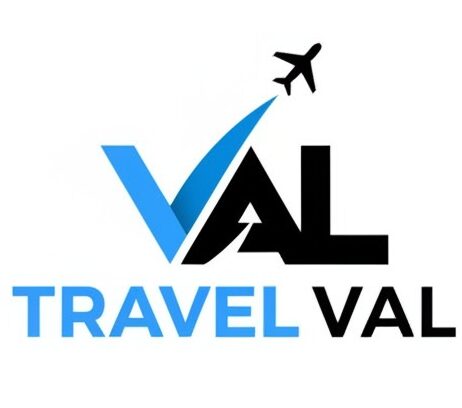Post-Graduation Pathways: How to Stay and Work Legally in Canada After Studying
So, you’ve finished your studies in Canada—congrats! 🎓 Now comes the big question: what’s next? For many international students, the dream doesn’t end with graduation. You might want to stay longer, gain some work experience, and maybe even build a life in the Great White North. That’s where understanding post-graduation pathways comes in.
This guide breaks down how to stay and work legally in Canada after studying, in a warm, friendly tone—because we know how overwhelming immigration lingo can be. Let’s walk through your options step-by-step.
Why Consider Post-Graduation Pathways in Canada?
Choosing to stay in Canada after your studies isn’t just practical—it’s a smart move. Here’s why:
- Strong job market in tech, healthcare, finance, and more
- Work experience boosts PR chances
- Canada values international grads (you already know the culture and speak the language!)
“After I graduated from my college in Toronto, I got a job at a marketing agency through a co-op contact. I’m now applying for PR!” – Lina, Humber College graduate
The Post-Graduation Work Permit (PGWP): Your First Step
What is a PGWP?
The Post-Graduation Work Permit is an open work permit for international students who’ve completed a qualifying program. It allows you to work for any employer, in any location in Canada.
Eligibility Requirements
To qualify, you must:
- Complete a full-time program (minimum 8 months) at a Designated Learning Institution (DLI)
- Apply within 180 days of receiving your final marks
- Hold a valid study permit at the time of your application
Validity Period
Your PGWP duration depends on your program length:
- Program < 8 months: Not eligible
- 8 months – 2 years: PGWP valid for same length as program
- 2+ years: PGWP valid for up to 3 years
Key Phrase Tip: “Post-graduation pathways” like PGWP are your bridge from classroom to career.
How to Apply for a PGWP
Step 1: Gather Your Documents
- Passport
- Official transcript or completion letter
- Proof of DLI and program details
Step 2: Apply Online
Use the IRCC portal. It’s straightforward, but double-check each entry—errors can delay processing.
Step 3: Wait for Approval
Processing times vary, but it’s usually 2–4 months. You can stay in Canada and work full-time while waiting, if you applied before your study permit expired.
Real Talk: Don’t wait till the last minute. Apply as soon as you get your final grades.
Finding a Job After Graduation
You’ve got your PGWP—now what?
Where to Look
- University career services
- LinkedIn and Indeed.ca
- Campus job fairs
- Networking events in your field
Entry-Level Opportunities
Canada welcomes international talent, especially in:
- Tech (software, data analysis)
- Healthcare
- Business and finance
- Skilled trades
Use Your Alumni Network
Your school’s alumni association is a goldmine for leads, mentorship, and support.
“I landed my first job through a referral from a former classmate. Don’t be shy—reach out!” – Ankit, Concordia University alum
Moving Toward Permanent Residency (PR)
Working in Canada after graduation opens doors to permanent residency. Here’s how.
Canadian Experience Class (CEC)
This is a stream under Express Entry, perfect for PGWP holders.
Requirements:
- 1 year of skilled work experience in Canada
- Language test (IELTS or CELPIP)
- Police certificates and medical exams
Provincial Nominee Program (PNP)
Some provinces offer nominations for international graduates, especially in high-demand fields. Examples:
- Ontario Immigrant Nominee Program (OINP)
- British Columbia PNP
- Alberta Advantage Immigration Program
Key Phrase Alert: Post-graduation pathways often lead to PR—plan your career steps early!
Tips for Making the Most of Your Post-Graduation Pathway
1. Stay Informed
Immigration rules change. Bookmark IRCC’s official site and subscribe to updates.
2. Keep Records
Document your employment, pay stubs, and contracts. They’ll help when applying for PR.
3. Build Canadian Work Culture Skills
- Punctuality
- Clear communication
- Teamwork
“I learned that speaking up in meetings is encouraged here. That wasn’t the case in my home country.” – Mei, University of British Columbia graduate
4. Mind Your Mental Health
The transition can be stressful. Join student and newcomer support groups to stay connected.
Common Challenges and How to Tackle Them
Challenge 1: Finding the First Job
Solution: Start applying before graduation, tailor your CV, and practice for interviews.
Challenge 2: Employer Unfamiliarity with PGWP
Solution: Be ready to explain that your PGWP requires no sponsorship.
Challenge 3: Expiring Permit Before PR Approval
Solution: Explore Bridging Open Work Permits (BOWP) to stay legal while waiting.
Key Phrase Reminder: Your post-graduation pathway might have bumps, but there’s always a solution.
Key Phrase Recap: Post-Graduation Pathways
Let’s repeat it once more: post-graduation pathways help you legally stay and work in Canada after completing your studies. From the PGWP to PR routes like Express Entry and PNPs, these steps form your roadmap to a successful future in Canada.
Stay proactive, stay positive, and don’t be afraid to ask for help when you need it. There’s a whole community rooting for you.
Final Thoughts
Living and studying in Canada is just the beginning. If you want to stay longer, work, and perhaps even become a permanent resident, there are clear paths available to you.
By understanding and navigating your post-graduation pathways, you’re setting yourself up for long-term success.
So take that next step confidently—your Canadian story is just beginning. 🇨🇦
From campus life to career success, you’ve got this!







